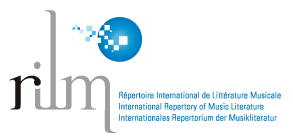"Women timpanist": a study about female orchestral percussionist in Spain (1990-2019)
Keywords:
Women in percussion, Female instrumentalists, Gender imbalance in orchestras, Female orchestra players, Women in MusicAbstract
Percussion has been a musical specialty linked to the ‘masculine’ and its feminization is being slow, especially in certain areas such as professional orchestras. After discovering some historical precedents and that the number of orchestral women percussionists has barely increased in almost 30 years in Spain, the main objective of this work is to know the opinions, experiences and perceptions of the percussionists themselves about the incorporation of women into this field and on their own work as professionals. With a mixed methodology, the study combines the collection of data on the distribution of the sexes on said instrument in the orchestras, an online survey and 10 in-depth face-to-face interviews. Abundant topics are addressed and emege, such as the way we “choose” our instrument, the influence of gender in the career, the feminization of percussion, the weight of stereotypes and the problem of equality in classical music. Although there are divergences, percussionists perceive that the gender does not influence the professional career, they are optimistic about the existing inequalities and they trust the increase in the female presence in the percussion section. Some of the unexpected contributions of the research are the discrepancies between the data and the perceptions, as well as the debate about the gender influence on the way of playing instruments.
Additional Files
Published
Issue
Section
License
Copyright (c) 2023 Revista Argentina de MusicologíaATTRIBUTION-NONCOMMERCIAL 4.0 INTERNATIONAL
https://creativecommons.org/licenses/by-nc/4.0/
You are free to:
- Share — copy and redistribute the material in any medium or format
- Adapt — remix, transform, and build upon the material
- The licensor cannot revoke these freedoms as long as you follow the license terms.
Under the following terms:
- Attribution — You must give appropriate credit , provide a link to the license, and indicate if changes were made . You may do so in any reasonable manner, but not in any way that suggests the licensor endorses you or your use.
- NonCommercial — You may not use the material for commercial purposes .
- No additional restrictions — You may not apply legal terms or technological measures that legally restrict others from doing anything the license permits.
Notices:
You do not have to comply with the license for elements of the material in the public domain or where your use is permitted by an applicable exception or limitation .
No warranties are given. The license may not give you all of the permissions necessary for your intended use. For example, other rights such as publicity, privacy, or moral rightsmay limit how you use the material.







